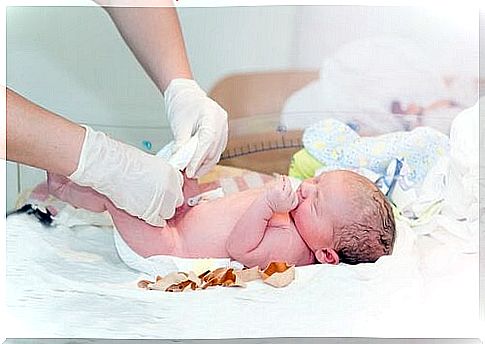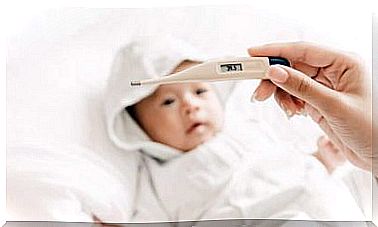The Umbilical Cord Around The Baby’s Neck

According to statistics, one in three children is born with the umbilical cord around the neck. Most parents therefore wonder if it is dangerous for the child.
A baby born with the umbilical cord around the neck is quite common. This topic has been the center of countless myths. Most are about the consequences it can have.
Of course, all the things that can be done to avoid this accident are in the hands of doctors, nurses and midwives. There is nothing that a mother can do to prevent it.
It is only after a checkup that many mothers are informed that their baby had the umbilical cord around his neck. Approx. 40% of cases occur right at birth.
The umbilical cord around the baby’s neck
The umbilical cord can be wrapped around the baby’s neck at any time during pregnancy. It can also be wrapped around other parts of the baby’s body. In fact, it is quite common for the umbilical cord to become wrapped around the baby’s arms or legs. So what’s the reason for that?
Main causes
- The umbilical cord is very long. Sometimes it can grow up to 55 centimeters long.
- The baby moves inside the uterus.
- When mothers have too much amniotic fluid. This can cause the umbilical cord to accidentally twist around the baby.

Birth procedure to get the umbilical cord out
The only way to get the umbilical cord from the baby’s neck is during birth. It is important to emphasize that just because the baby has the umbilical cord around its neck, does not mean that you have to give birth by caesarean section. There are three techniques that doctors use to get the umbilical cord off.
The first technique is the simplest and most common procedure performed almost 90% of the time. The doctor waits for the baby’s head to come out of the vaginal canal, after which he then takes the umbilical cord and slides it over the baby’s head. This is sometimes all it takes to get the baby free.
The technique is simple for two reasons. The first reason is that the umbilical cord is loose around the baby. The second reason is that the umbilical cord has a gelatinous consistency so that it can slide easily.
The second technique is used only in 9% of all cases. To perform this technique, the doctor waits for the baby to come completely out of the vaginal canal. He holds the baby close to the mother’s crotch and tilts the baby a little to make the umbilical cord slide over the baby’s body. This technique is known as: “Cat spin.”
Last resort
The latter technique is used in only 1% of all cases, but it is the one that scares the parents the most. It has contributed a lot to the myths surrounding having the umbilical cord around the baby’s neck.
If doctors notice that the umbilical cord has become so wrapped around the baby that it cannot get air, then the doctor continues to cut the umbilical cord while it is still inside the vaginal canal. This is done by first inserting two hooks, and then they use scissors to gently release the child.
Myths related to this topic
There are many myths about the possible injuries that babies face if the umbilical cord is wrapped around the neck or limbs. Complications occur in only 1% of all cases and do not normally endanger the child’s life.

As described above, the three techniques can be used when it comes to the umbilical cord being wrapped around the baby’s neck. They are all performed efficiently by specialists. This can happen due to many different things, including the movement of the fetus in the womb.
Having the umbilical cord wrapped around a baby’s body does not usually pose a major risk to its health. It is quite common in maternity wards; Therefore, there are fully trained specialists in this field.
As a parent, you should not be carried away by the alarming information. Go through the most up-to-date and accurate information on this topic. It will definitely make you relax again.









